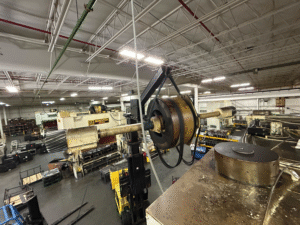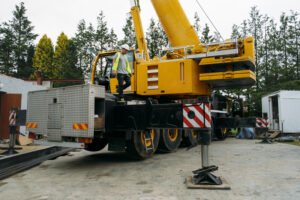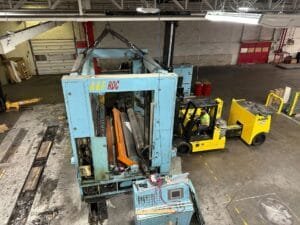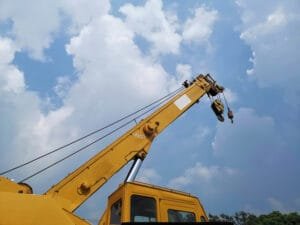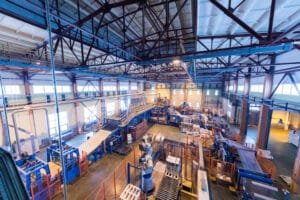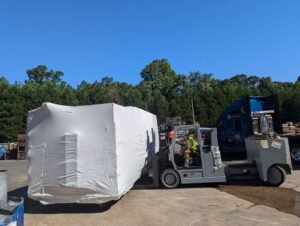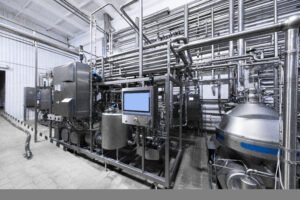Moving heavy equipment in confined spaces is a challenging yet essential skill, especially on crowded construction sites, in urban environments, or even indoors. Proper planning, technique, and the right tools can make a significant difference in efficiency, safety, and overall success. Here’s a comprehensive guide on how to tackle heavy equipment moves in tight spaces, divided into three main sections:
Preparing for a Confined Equipment Move
Before attempting to move any heavy equipment in a tight space, careful planning and preparation are essential. This stage includes assessing the environment, understanding equipment limitations, and ensuring all safety protocols are met.
Assessing the Environment
- Map Out the Area: Take time to measure and map out the space you’ll be working in. A physical map or 3D model can help visualize the layout, understand any restrictions, and plan paths for moving the equipment.
- Identify Obstacles: Look for potential obstructions like low ceilings, narrow doorways, overhead wires, or surrounding structures. Knowing what obstacles lie in the path allows for better equipment selection and helps avoid accidents.
- Establish Safe Zones: Designate safe areas where people and tools should stay while the equipment is being moved. This minimizes the risk of accidents and keeps the workspace organized.
- Evaluate Ground Conditions: Check the ground for stability, particularly if it’s uneven, wet, or has loose gravel, as this can affect the movement and safety of the equipment.
Choosing the Right Equipment
- Compact and Specialized Equipment: In confined spaces, compact equipment is often the best choice. Mini-excavators, skid steer loaders, or compact cranes are all designed to navigate small areas effectively.
- Use of Attachments: Choosing the right attachments can help with control and maneuverability. For instance, fork extensions or specialized lifting attachments can provide better reach and precision without requiring extra space.
- Remote-Controlled or Automated Equipment: Some heavy machinery comes with remote-control options, allowing operators to control it from a safe distance and making it easier to move around without obstructing their own view.
Prioritizing Safety
- Operator Training: Ensure that all operators are well-trained, especially on maneuvering within confined spaces, where safety margins are low, and precise control is crucial.
- Use of Spotters: A spotter can guide the operator, helping them maneuver around obstacles and blind spots, ensuring that the equipment stays on track.
- Clear Communication: Ensure all personnel involved in the move understand the plan, hazards, and designated roles. Using hand signals or radio communication can be invaluable for maintaining clarity.
Techniques for Moving Heavy Equipment in Tight Spaces
Once you have prepared the area and equipment, the next step is to use techniques that optimize control and maneuverability. These methods are designed to help operators move equipment safely and efficiently in small, constrained spaces.
Utilizing Slow and Steady Movements
- Low-Speed Precision: Operate the equipment at the lowest possible speed, allowing more time to react to unexpected obstacles or changes in direction. Even minor adjustments become easier when the equipment is moving slowly.
- Short, Incremental Movements: Instead of large, sweeping motions, use short and incremental movements, adjusting frequently to maintain control. This helps avoid over-correction and keeps the equipment on a defined path.
- Practice ‘Counter-Steering’ Techniques: For certain equipment, like forklifts or skid steers, counter-steering helps navigate corners and narrow spaces without losing balance.
Using Specialized Maneuvering Techniques
- 3-Point Turn for Tight Corners: If space is especially tight, use a 3-point turn technique to navigate corners, moving the equipment back and forth until it aligns with the next path. This technique requires patience but is effective in confined areas.
- Skid Steer Turning: For skid steers and similar equipment, make use of their ability to rotate on the spot. This feature helps avoid additional turns or complicated paths, providing a significant advantage in tight areas.
- Crab Walk Technique for Sideways Movement: Equipment with a crab walk feature allows the operator to move the machinery diagonally, which can help when moving parallel to walls or when space is restricted on both sides.
Leveraging Visual Aids for Enhanced Precision
- Mirrors and Cameras: Many modern machines come equipped with cameras and mirrors that give operators a better view of the area around the machine, reducing the risk of accidental collisions.
- Laser Alignment Tools: Use laser alignment tools to keep track of the equipment’s path, especially helpful for navigating long and narrow spaces like corridors or between buildings.
- Using Markers or Spotting Lines: Place temporary markers or lines on the ground to guide the equipment’s path. These visual cues assist operators in staying within boundaries and avoid drifting off-course.
Tools and Technologies for Moving Equipment in Tight Spaces
New tools and technologies continue to simplify the challenges of moving heavy equipment in confined areas. By integrating these resources, operators can move equipment with greater ease, precision, and safety.
Rollers and Skates for Low-Height Moves
- Machine Rollers and Skates: Machine rollers or skates are ideal for moving heavy equipment with a low profile in confined spaces. These tools are especially useful indoors or on flat surfaces, allowing for smooth gliding movements.
- Hydraulic Jacks: When equipment needs to be lifted to place rollers or skates beneath it, hydraulic jacks provide the necessary lift without requiring a large footprint.
- Dollies and Platforms: When moving lightweight heavy machinery, dollies or platform carts can provide an easy solution for maneuvering in confined spaces.
Remote-Controlled and GPS-Enabled Equipment
- Remote-Controlled Systems: Some heavy equipment, especially mini-excavators and loaders, come with remote-control systems. These allow operators to control equipment from a distance, offering better visibility and making confined moves safer.
- GPS and Telematics for Precision Moves: GPS and telematics systems help operators stay precisely on track, providing data on position and orientation. For tight-space moves, this level of precision is invaluable.
- Autonomous Features: Some advanced equipment includes semi-autonomous or autonomous features that can be programmed for specific movements, reducing the margin for error in confined spaces.
Customized Attachments for Enhanced Maneuverability
- Shorter Arm Attachments: When moving equipment like cranes or excavators, shorter arm attachments can provide better control and reduce the footprint.
- Rotational Attachments: Attachments that allow 360-degree rotation can make it easier to navigate confined spaces without moving the base equipment, ideal for managing difficult angles and spaces.
- Articulating Extensions: Articulating extensions allow operators to adjust the direction of tools or arms without repositioning the base machinery. These extensions offer flexibility in confined areas and improve safety.
Conclusion
Moving heavy equipment in tight spaces requires a combination of proper preparation, skillful techniques, and specialized tools. By assessing the environment and selecting appropriate equipment and attachments, you can avoid common pitfalls and navigate tight spaces safely. Techniques such as slow, controlled movements and the use of specialized maneuvering methods allow operators to handle equipment with precision. Leveraging tools and technologies like rollers, remote controls, and GPS systems further simplifies the task.
In the end, each successful move depends on thorough planning, clear communication among team members, and a steady hand at the controls. For construction teams facing the unique challenge of operating in tight spaces, these tips and tricks can make all the difference in maintaining both productivity and safety on the job site.

